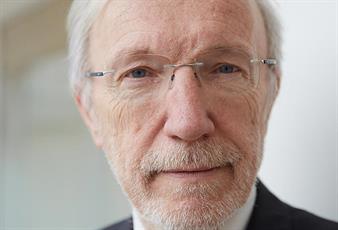Paul Holmes 27 May 2018 // 7:00AM GMT

AMSTERDAM—With much of the conversation around the rise of artificial intelligence focused around either utopian or dystopian extremes, it is the job of corporate communicators to focus on the reality, a panel of senior communicators at our fifth EMEA region In2 Summit in Amsterdam agreed.
During a conversation on “Building Trusted Brands in the Era of Algorithms,” sponsored by Swiss public relations agency Farner, SAP innovation communications expert Jessica Baxmann explained, “It’s really up to communicators to explain what the technology can do and to engage people in discussions about best practices in this technology and what impact it can have on society.
“I see a lot of marketers exaggerating what it can do today, but we at SAP think there is huge potential. I see a lot of communications from companies and from journalists that are not based on what we can do today. We need to focus on what is there today. We have to help ensure the conversation doesn’t go too far in the direction of over-hyping, which I think is going on right now, or talking about the dangers. The extremes make great stories for reporters, but we have to keep focus on the reality, and on what AI is capable of today.”
Aaron Sherinian, global communications director, Aga Khan Development Network, agreed that there was too much hype, but encouraged communicators to tell a positive story, “We can’t pretend that machines are going to save the world, but we can say that machines are going to open the door but humans are still going to have to solve the problem.”
However, Ed Walsh, SVP, global integrated communications & events at Philips, cautioned against ignoring consumer concerns. “There is very little oversight over how these things are being developed. There’s a human bias embedded in a lot of this. There needs to be human oversight. We can’t just rely on the technology.”
Ultimately, Sherinian argued, communicators find themselves in the role of educators and explainers: “Technology and artificial intelligence are about the people we serve, and they are grappling with these issues. We have a role in helping people figure out what these tools mean.”
Where there was broad agreement among the panel was on the issue of how AI could benefit marketers and communicators.
Daniel Jörg, partner and head of digital at Farner, said AI was helping communicators answer critical questions: “How can we get closer to our stakeholders. How can we be part of the customer journey, and be sure we are delivering the right messages at the right time? Those are the questions AI can help us answer right now.”
Said Baxmann, “AI will ultimately deliver a better brand experience.”
Walsh got more specific: “There are tools that can help us assess sentiment across a broad spectrum of media and help us as communicators understand when and how we need to intervene.”
In both addressing the communications issues around AI and making sure it contributes positively to communications management, PR people need to be involved in the innovation process at an early stage, panelists agreed.
“Communication is a key part of the innovation process, especially in tech where new technology comes up all the time,” said Baxmann. “It plays a role in recruiting the right talent to take you into new fields and new products, and it provides you with feedback on what people want, what they like about the product and how they will actually use the product. It helps you refine the story you want to tell.”
Walsh, meanwhile, focused on ensuring that the innovation story is relevant to consumers. “Rather than talk about AI and the technical dimension of new product development, we prefer to talk about the problem we are trying to solve and the nature of the solution we are bringing to the table.”
In conclusion, Baxmann said: “I can’t stress enough how much potential there is for companies. There’s a wide spectrum of opinions on this, but I would like to take a look at what’s possible today. We are at a stage of narrow AI, very basic tasks that machines can accomplish. We’re a long way away from true AI taking away our jobs, but machine learning can help us sort through all the data out there, and augment what we do as humans.
“What we have to do as communicators is know our consumers and that’s where AI can help, because it give us real insights into and detailed data about our consumers. We can spend the time on higher-value tasks that the machines can’t do.”


































.jpg)
















